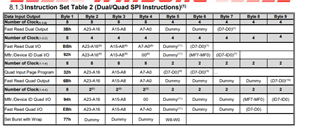Hi,
I have a questions regarding writes in OSPI XIP mode. (not running code from the device, just data)
When using OSPI boatloader it is possible to configure OSPI device in XIP mode for memory mapped reads.
I understand that memory mapped writes are not possible in SPI Flash due to flash storage limitations.(erase,page write)
SPI MRAM/FRAM do not have these write limitations.
Is it possible to use memory map to do writes in that case?
best regards,
Tom


